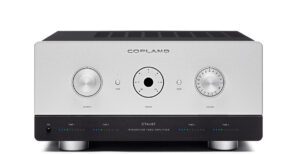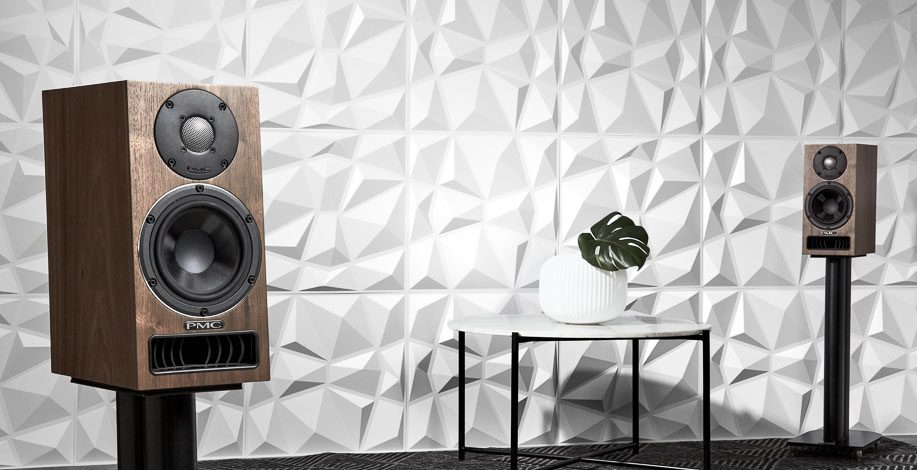
Bristol Hi-Fi Show, February 2023, PMC demonstration suite. It’s standing room only and by the smiles on faces, the head-nodding and the foot-tapping, visitors are approving of the sound being produced. Even from outside in the corridor it has it all going on; impressive dynamic agility, strong tonal detail, crisp timing and room-pressurising dynamic expression.
It’s a moment of hi-fi show quality, all the more remarkable because the speakers being demonstrated are not as might be expected PMC’s Fenestria £60,000 flagship design, but instead the buzz is about the company’s smallest and least costly domestic transmission line model, the £2,395 twenty5.21i.
Dinky the speakers may be, but they are generating the scale and sonic weight of notably larger boxes. Several visitors ask where the sub-woofer is hidden, but there’s been no sleight of hand; it’s purely down to PMC’s canny exploitation of transmission line physics.
Transmission vamping
Transmission line is an alternative way of using the resistance of air to damp movement of the bass driver cone. In an infinite baffle speaker, the rear of the driver faces into a sealed box. A reflex speaker adds a tuned port to the box. In a transmission line design the rear of the driver faces into a long rectangular tube, sealed at one end but with the other end exiting through a slot in the cabinet baffle. The tube is lined with acoustic material to absorb all but the desired bass frequencies. The air in the tube presents consistent resistance to the movement of the cone, and at the outlet in the baffle it presents an in-phase image of the low frequency energy emitted from the front of the driver. It’s almost like having two drivers. The result is greater efficiency, an ability to transcribe lower octaves, and, because the cone movement is so well controlled, less harmonic distortion to obscure the midrange.
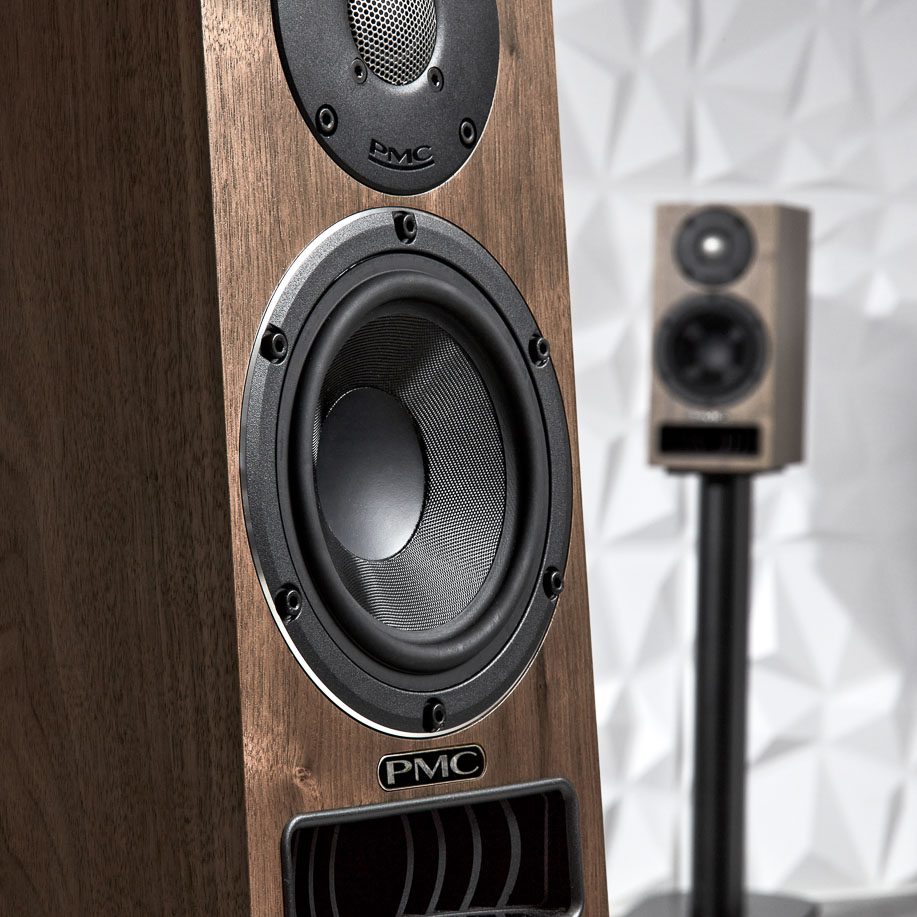
In a true transmission line, the tube must be as long as the wavelength of the lowest desired frequency. A line designed to support 25Hz will be nearly 14m long, clearly impractical for a domestic speaker. However, specific fractions of a full-length line – half-wave, quarter-wave – can be made to work almost as effectively, and by folding the line back on itself several times it can be made to fit inside an acceptably compact cabinet. Transmission lines have notable performance upsides, but it makes the job of the speaker designer much harder by adding considerable complexity and variance. As PMC’s co-founder and CEO Peter Thomas notes candidly: “It’s a pig, a real pig, to design for.” Even so, it is the territory that PMC has chosen to occupy for some 30 years.
Changes
PMC has made significant changes to all six speakers in the twenty5 series in order to give them ‘i’ status. Viewed from side on, the cabinets remain rhomboid parallelograms as before, with the baffles sloping away from the listening position to impart a degree of time-alignment to the drivers. For the 21i, the mid-range/woofer is the same 140mm type used in the previous model, but the tweeter is now a 19mm soft-domed unit developed with SEAS for use right across the i-series. It is set within a sculpted 34mm surround and wears a perforated dispersion grille. The crossover of the 21i is also revised, using PMC’s usual 24dB per octave slope but with a lower crossover point, 1.7kHz, to allow both drivers to work in their most linear regions. PMC says the dispersion characteristics at the crossover point are also more ideally matched for a more natural sound presentation and a consistent tonal balance. The transmission line port at the bottom of the baffle is fitted with PMC’s Laminair outlet to reduce the efficiency losses from turbulence.
The twenty5.21i cabinet is 340mm high, 162mm wide and 242mm deep, and weighs approximately 6kg. The speaker has a claimed efficiency of 86.5dB and is suited to amplifiers with an output of between 30 and 150 Watts per channel. The review samples were in a flawless walnut finish. For £400 PMC supplies stands to go with the speakers, 634mm high with spikes on and weighing 19kg.
A number of much larger and competent floorstanding speakers can be had for the combined £2,800 cost of a pair of 21i speakers and stands. However, there are some environments in which only a small stand-mounted speaker will do, and these are PMC’s target settings for the 21i. The review samples were therefore set up in the listening room as most buyers will use them, in the nearfield position and toed in to cross just behind the listener’s head. They proved quite unfussy about proximity to the side walls, and due to their relative light weight on the stands were easily moved incrementally back and forth from the front wall to achieve a satisfying balance of low and high frequencies.
Little and large
The listening room’s regular speakers are PMC MB2se monitors. At 75kg each, temporarily removing them from the room so as to avoid unhelpful interaction with their smaller stable-mates was no mean feat. Once done though, the similarities between the two models, little and large, were more apparent than were the differences.
Of course, the little PMCs don’t move as much air as the larger ones, and neither do they plumb the octave depths to the same extent, but there’s an inescapable commonality to the sound – PMC would no doubt like us to call it honest neutrality – that did not leave listeners feeling especially short-changed. Quite the opposite in fact. A succession of non-audiophile visitors expressed approval of the sound generated, noting with little or no prompting the physical energy they imparted to the room and how, with quality material, they created a satisfying degree of the being-there illusion. If we were PMC we’d surely take that to the bank as it is. But in audiophile terms though, there’s still more going on that merits attention. The changes embodied in the ‘i’ designation result in, says PMC, improved linearity, dispersion and low-end extension.
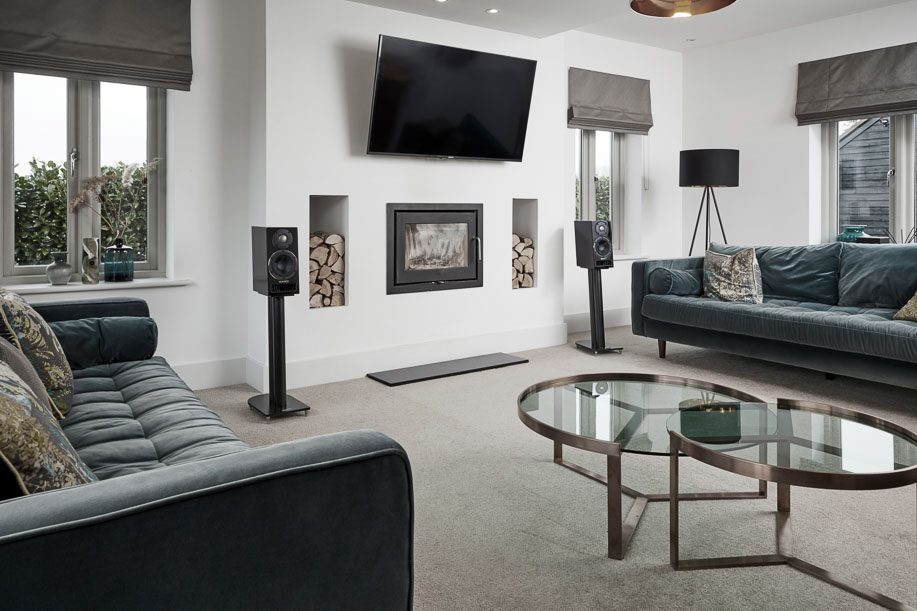
Two different amplifiers were used for the review, a Quiescent T100SPA, and a Moon 760A, quite different from each other in physical and electronic constitution but broadly similar in terms of power output at around 130 Watts per channel into 8 Ohms. Sources were a Jay’s Audio CDT3 MK3 CD transport, a Grimm Audio MU1 streamer and an Audio Note TT Three, the first two via a Mola Mola Tambaqui DAC, the latter via a PS Audio Stellar phono stage. An icOn 4PRO balanced passive line stage attenuated the outputs of the DAC and phono stage.
Sotto voce
Initial listening was carried out at the kind of low volume level that our flat-dweller might choose to adopt out of respect for the neighbours. The little PMCs excelled at the task, generating the full measure of their version of sonic truth without needing to be driven anywhere near as hard as other speakers would require to properly come alive. Even at such low playback levels, they created reasonable 50Hz pressure in the six by four metre listening room, in the nearfield sounding more muscular than ported and sealed box designs of recent acquaintance.
Tonal and textural detail was satisfyingly strong, giving massed orchestral strings, for example, a surprisingly sophisticated degree of resinous grippy quality along with the weight. When playing complex and large-scale material such as symphonic and big band music, listeners were treated to a finely-drawn sense of the acoustic of the recording space, along with a level of detail resolution that provoked multiple ‘I never heard that before’ moments.
PMC’s Peter Thomas cut his teeth over 40 years ago working in studio engineering support at the BBC where in the context of loudspeaker design the ability to reproduce the human voice well was primus inter pares. Old habits die hard and so too do proven methodologies. It’s not surprising therefore that the ability to reproduce speech is one of the key elements of the fine-tuning process at PMC. The household’s MB2se reference speakers deliver spoken and sung voices with startling accuracy, and similar, albeit lighter-weight competence, was shown by the 21i which exhibited a disarmingly natural free-breathing, diaphragmic quality.
The 21i demonstrated fine competence in timing, without any hint of low-end group-delay. One visitor during the review period wanted to hear something with electric bass and so a copy of Thunder, the album by the all-bass trio of Stanley Clarke, Marcus Miller and Victor Wooten, was pulled from the shelf. With the title track playing at enthusiastic volume the visitor jabbed a finger at the PMCs and shouted: ‘Those speakers are really on it.’ And she was right. The track is a real challenge and some speakers fail it by blurring the three musicians, who play simultaneously at times, into a single homogenised sound. Along with the tight-as-a-drum timing the little PMCs exhibited strong tonal discernment and subtlety, enabling the character of the individual bass guitars to be easily discerned in the mix, while subjectively good top-to-bottom control of phase added a confidently drawn soundstage that made the track even more engaging.
Low distortion
Another 21i quality that gradually asserted itself in the consciousness over the review period was that of transparency and low distortion. PMC says this is in part an outcome of well-implemented transmission line; the mid-woofer is uncommonly well controlled by the loading provided by the line and so has less of a tendency to generate unwanted harmonics to obscure and pollute midrange detail. The new tweeter undoubtedly plays a role here too. Integration with the mid-woofer is subjectively seamless, and the driver sounds more sophisticated than one might expect for a circa £2,400 speaker. That’s not surprising since the same unit is used in the entire twenty5i range, including the twenty5.26i at £9,895. Genuine trickle-down in action?
Well-implemented transmission line is a gift that keeps on giving because it requires a complex cabinet construction that by default further contributes to low distortion and coloration. In the 21i the line – formed from HDF – folds back on itself four times in order to fit within the speaker carcass, thereby creating very substantial side-to-side bracing. This results in a particularly rigid and inert enclosure, less prone to singing along with the drivers to create distortion and coloration than it otherwise could be.
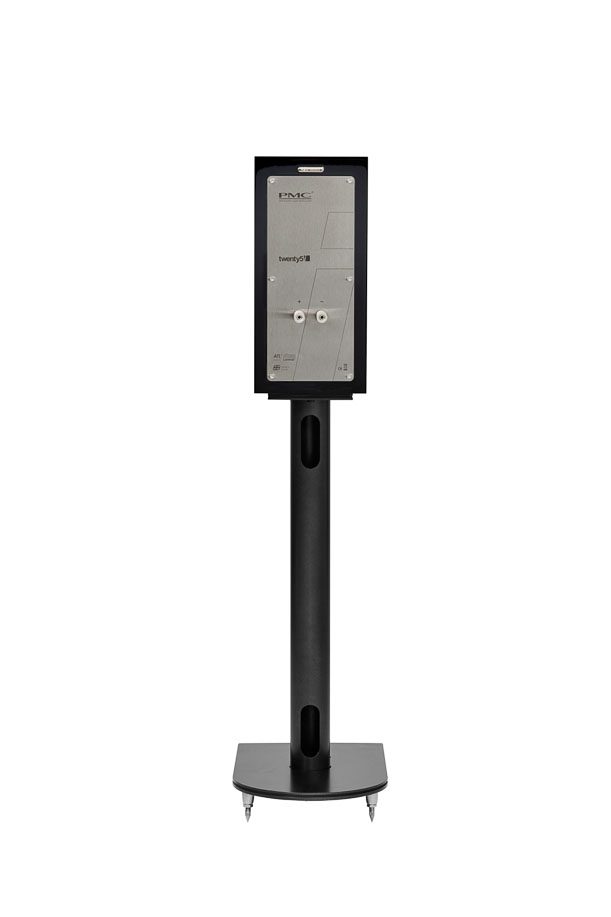
During that earlier listening session there were five of us in the room, and not enough chairs to go around. Everyone was too polite to hog the perch in the supposed sweet spot, but it did not matter overly much: the little PMCs proved tolerant of off-axis listening, confirming an even dispersion and tonal balance. Indeed, the 21i exhibits almost the kind of benign and non-critical behaviour we would expect of a nearfield studio monitor designed to allow an engineer to scoot laterally side to side on their chair as they work a mixing desk. Listeners to the edge of the sound stage could perceive tonally even musical events in space almost as well as those nearer the centre.
Conclusion
Used in an appropriate setting, the PMC twenty5.21i is a compact jewel of a speaker that is very hard to fault. A confident re-statement by the brand of sure-footed design integrity, it presents buyers in a particularly competitive price band with a very serious contender for their attention. Indeed, the twenty5.21i might even be the best small stand-mounted speaker that can currently be had for the money.
Technical specifications
- Drive Units: LF PMC 5.5”/140mm long-throw g-weave™ cone with cast alloy chassis HF: PMC/SEAS®, 19mm twenty5i series, SONOMEX™ fabric soft dome, Ferrofluid cooled, with 34mm surround and dispersion grille
- Crossover Frequency: 1.7kHz
- Frequency Response: 46Hz–25kHz
- Impedance: 8 Ohm
- Sensitivity: 86.5dB 1W 1m
- Recommended Amp Power: 30–150W
- Available Finishes: Walnut, Diamond Black, Oak, White Silk
- Dimensions: H 340mm 13.4” × W 162mm 6.4” × D 284mm 11.2” (including terminals)
- Weigh: 6kg (13.2 lbs ea.)
- Price: £2,395 UK retail per pair
Manufacturer:
PMC
+44 (0)1767 686300
By Kevin Fiske
More articles from this authorRead Next From Review
See all
PrimaLuna EVO 100 phono preamplifier
- Apr 22, 2024

Reiki Audio SuperSwitch Master Pro + Servant Pro
- Mar 27, 2024

Melco Audio N1-S38 music server
- Mar 27, 2024








